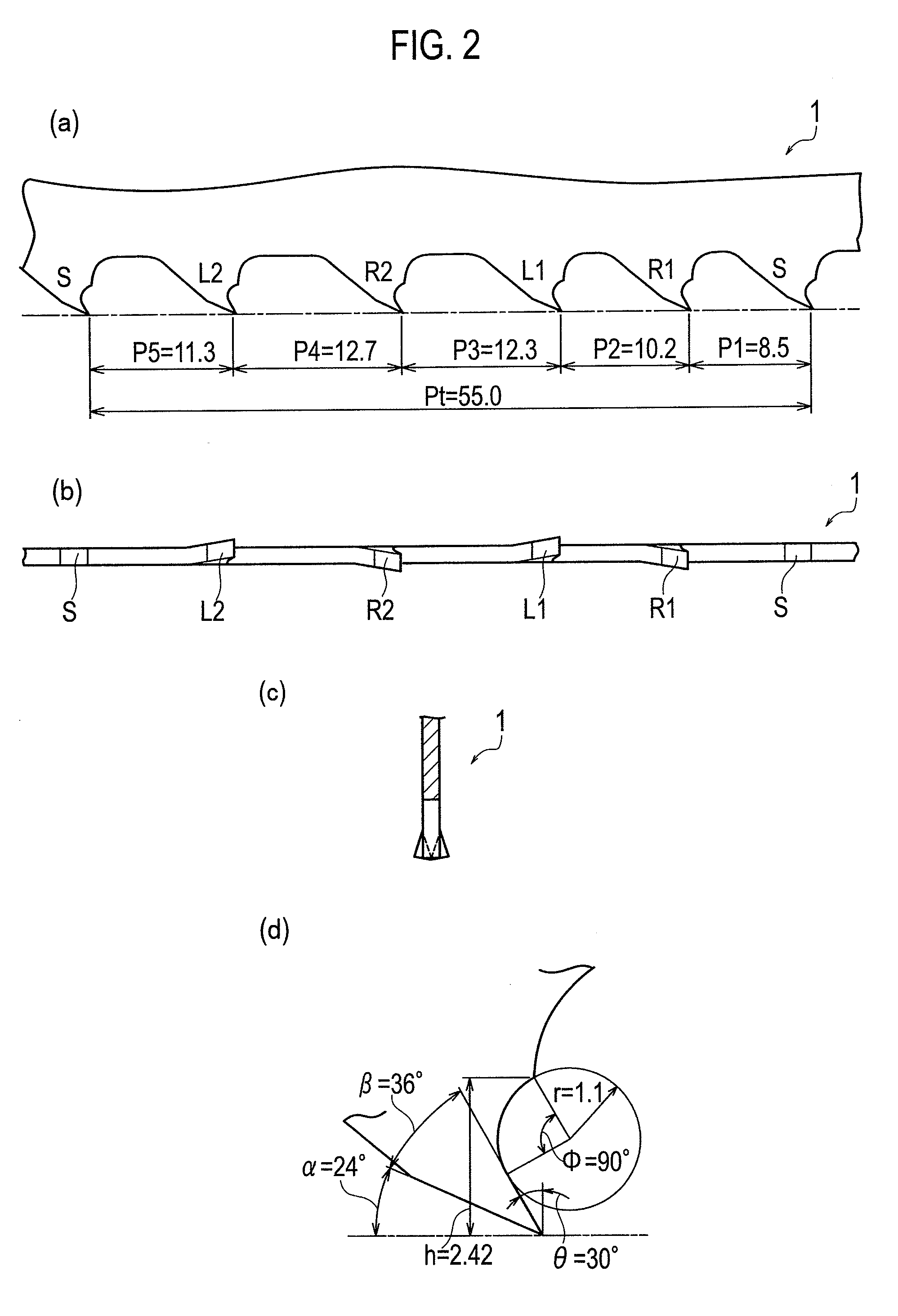Saw blade and manufacturing method thereof
a manufacturing method and technology for saw blades, applied in the field of saw blades, can solve the problems of large rigidity of saw blades, and large rigidity of tooth points, and achieve the effects of improving the abrasion resistance of saw teeth, reducing cutting resistance, and improving chipping resistan
- Summary
- Abstract
- Description
- Claims
- Application Information
AI Technical Summary
Benefits of technology
Problems solved by technology
Method used
Image
Examples
Embodiment Construction
[0115]Embodiments of the present invention will be described below by using the drawings.
[0116]FIG. 1 conceptually and schematically shows a band saw blade 1 according to an embodiment of the present invention.
[0117]As similar to a general band saw blade, the band saw blade 1 includes a straight tooth S which is not provided with setting in a right-to-left direction viewed from a traveling direction (a direction of an arrow A) of the band saw blade 1, multiple right set teeth R1 and R2 provided with rightward setting, and multiple left set teeth L1 and L2 provided with leftward setting, collectively as one group.
[0118]It is to be noted that the number of the straight teeth S in one group, and the numbers of the right and left set teeth R and L therein are arbitrary, and that the order of layout of the straight teeth S and the right and left set teeth R and L are arbitrary. Moreover, pitches P1 to P5 among the straight teeth S and the right and left set teeth R and L are arbitrary an...
PUM
| Property | Measurement | Unit |
|---|---|---|
| Fraction | aaaaa | aaaaa |
| Fraction | aaaaa | aaaaa |
| Angle | aaaaa | aaaaa |
Abstract
Description
Claims
Application Information
 Login to View More
Login to View More - R&D
- Intellectual Property
- Life Sciences
- Materials
- Tech Scout
- Unparalleled Data Quality
- Higher Quality Content
- 60% Fewer Hallucinations
Browse by: Latest US Patents, China's latest patents, Technical Efficacy Thesaurus, Application Domain, Technology Topic, Popular Technical Reports.
© 2025 PatSnap. All rights reserved.Legal|Privacy policy|Modern Slavery Act Transparency Statement|Sitemap|About US| Contact US: help@patsnap.com



